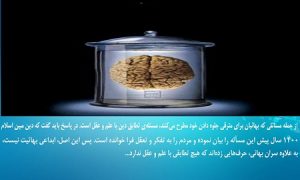Abdul Baha has stepped on the slogan of the conformity between science and wisdom by reasoning for palmistry. The Baha’i leaders are confirming palmistry in one side contrary science and wisdom and on other side they consider the reality of religions as superstition!
The second leader of Baha’ism, Abdul Baha has confirmed palmistry and has posed the relationships among the universe members as his parts as the human body and that each illness has a sign in body. He claimed: It is not suprizing that there are secrets hidden in palm lines in order for the truths of present time and future to be figured out as he said:
“… And now the issue of the palm and all the universe which is the members of the great body of the world. The whole is relevant with the whole; that is, each creature from the universe is a member of the members of the great body… For instance, the color of eye will show the temperature and hidden illnesses of viscus and side effects will be discovered by the pulse. It is not surprising for the palm lines to discover the truths of present and future time[1].”
However, the divine religion have rejected palmistry; while Abdul Baha has reasoned it.[2]
The Answer:
Abdul Baha has confirmed palmistry and preaching superstitions while he has introduced his creed as the herald of the slogan of the conformity between science and wisdom[3].
The Baha’i leaders have rejected the existence of jinnee[4] and contrary to their principle of prohibition of interpreting[5], they interpret and deviate the divine verses of the Holy Quran, while they are reasoning for superstitions or default truth!!!
[۱] Abbas Effendi, Makatib, Egypt: Sheikh Farajullah Zakiul Kurdi, Bita, Vol. 2, pp. 94-95.
[۲] Refer to Feizul Islam Isfahani, Nahjul Balaqeh, Tehran: Faqih publishing organization, 1368 S.H., The number of vomuls: 6, languages: Arabic-Persian, sermon 78, Vol. 1, p. 178.
[۳] Ahmad YAzdani, spiritual basics, Bija, Tehran: The national assembly of publishing national works, 104 Badi’a, p. 30.
[۴] Abbas Effendi, Makatib, narrated by the proselytizing networks of the Baha’ism organization, Vol. 3, p. 253.
[۵] Ishraq Khawari, the treasury of limitations and commandments, the electronic copy, pp. 340-341.






